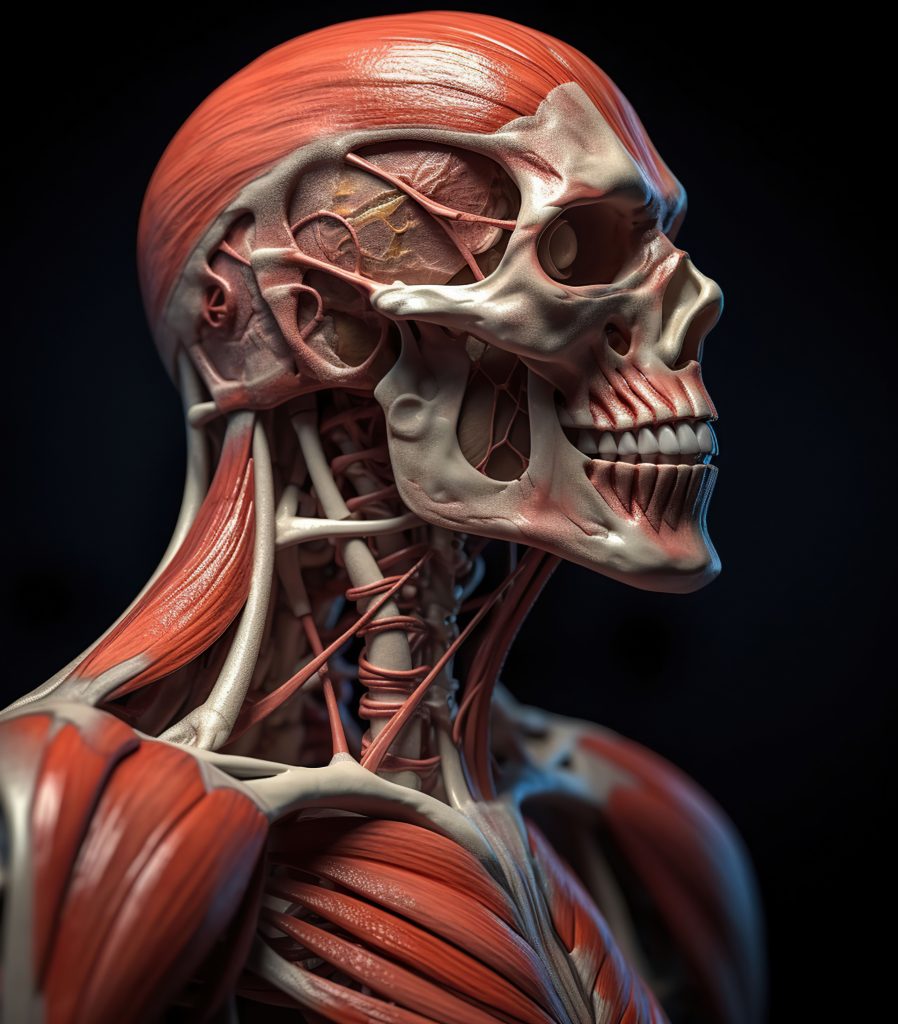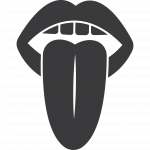FREQUENTLY ASKED QUESTIONS
Understanding Orofacial Myofunctional Therapy: Your Top Questions Answered
Orofacial Myofunctional Therapy (OMT) is a specialized, science-based approach designed to identify, treat, and correct orofacial myofunctional disorders (OMDs)—conditions that occur when the muscles and functions of the mouth and face do not work together properly. These disorders can affect everyday activities such as breathing, chewing, swallowing, sucking, and speaking, and may even influence facial growth and appearance.
Orofacial Myofuntional Therapy
Through targeted exercises and neuromuscular re-education, OMT helps retrain the muscles of the lips, tongue, cheeks, and face to restore proper function and balance. This therapy not only addresses the root causes of dysfunctional habits but can also improve airway health, oral posture, dental alignment, and overall facial aesthetics.
Because OMDs often overlap with other health concerns, treatment is highly collaborative. Myofunctional therapists frequently work alongside dentists, orthodontists, ENTs, physicians, speech-language pathologists, physical therapists, nutritionists, and psychologists to deliver comprehensive care.
As this innovative field continues to grow, many people have questions about how OMT works, who it can help, and what results to expect. Below, we’ve compiled answers to the most common questions about orofacial myofunctional therapy—so you can better understand how it may benefit you or your child.
General Information
Orofacial Myofunctional Therapy is neurological re-education exercises to assist the normalization of the developing, or developed, craniofacial structures and function. It is related to the study, research, prevention, evaluation, diagnosis and treatment of functional and structural alterations in the region of the mouth (oro), face (facial) and regions of the neck (oropharyngeal area). (OMDs) are problems with the muscles of the face and mouth that can affect chewing, swallowing, breathing, and speech. Common signs include tongue thrusting, mouth breathing, and poor lip closure, which can lead to issues like difficulties with certain sounds, picky eating, and issues with dental development. Treatment, often called myofunctional therapy, can help correct these issues and is frequently provided by a team of professionals like speech-language pathologists, Certified Orofacial Myofunctional Therapists, and orthodontists.
Orofacial Myofunctional Disorders interrupt normalized movement patterns. Orthodontists have documented their concerns about OMDs since the early 1900’s. Failure to address an OMD can result in one or more of the following
- Long term mouth-breathing patterns that compromises overall healthy breathing
- Detrimental oral habits that impede further growth and development
- Atypical patterns that impact chewing and swallowing
- The improper development/alignment of the teeth
- The improper development of jaw growth and facial structure
- Slowing the process of orthodontic treatment
- Undermining the long-term stability of orthodontic treatment, resulting in malocclusion relapse
- Negative impact of the stability and function of the temporomandibular joint (TMJ)
- Atypical Speech patterns
- Drawing negative attention to oneself due to open mouth postures or noisy chewing and swallowing patterns
A variety of secondary issues including but not limited to…
- Chronic facial
- Neck and back pain
- Headaches
- Grinding (bruxism) and clenching
- Temporomandibular joint dysfunction (TMJD or TMD)
- Episodes of tinnitus and vertigo
- Sleep apnea and sleep disordered breathing patterns
- Feeding and swallowing disorders including but not limited to picky eating and/or self limiting diets
Orofacial Myofunctional Therapy involves an individualized program to help the patient retrain these maladaptive patterns of muscle function, and helps to create and maintain a healthy orofacial environment. Treatment goals may include the following:
Normalize oral resting postures
Establish nasal breathing patterns
Normalize chewing and swallowing
Improve the strength, endurance and dissociation of orofacial musculature
Address harmful oral habits including:
- Prolonged pacifier use
- Thumb and/or finger sucking
- Fingernail, cheek, or lip biting
- Tongue sucking
- Clenching or grinding of the teeth
Treatment is often a collaborative process with a variety of medical and dental specialists. A Certified Orofacial Myofunctional therapist can help you determine what may be contributing to the presence of an OMD, and can help refer you to the appropriate clinicians to address these concerns.
Orofacial myofunctional disorders, or OMDs, are kind of like that annoying group project in school — there’s never just one reason things go wrong. Instead, it’s usually a team effort of multiple factors messing things up. The biggest troublemaker? Blocked nasal airways. Yep, stuff like enlarged adenoids or tonsils, chronic congestion, allergies, or a crooked septum can make nose breathing feel like trying to suck a milkshake through a coffee stirrer.
So, what does your body do when the nose isn’t pulling its weight? It switches to mouth breathing — which might sound harmless (hey, air’s still getting in, right?), but over time, it’s kind of a big deal. Think of mouth breathing as your jaw, tongue, and lips deciding to go on vacation from their usual positions. Once they’re out of place for long enough, they can actually change how your face grows, leading to bite problems (aka malocclusion) that make orthodontists very busy — and very rich.
And that’s not all. Mouth breathing skips the VIP filtration system built into your nasal passages, which normally cleans, warms, and humidifies the air before it hits your lungs. Without that natural air-prep station, your body can end up dealing with more health issues and functional challenges than it bargained for.
So, while mouth breathing might seem like an easy shortcut, it’s more like using the emergency exit every day — convenient at first, but eventually it causes bigger problems.
Evidence based practice suggests that OMDs may also develop as a result of:
- Hypotonia (low tone)
- Structural or physiological abnormalities such as cleft palate, or maxillary insufficiency
- Tethered Oral Tissues (lingual, labial, buccal ties)
- Neurological deficits
- Developmental delays
- Genetic predisposition
- Birth trauma
Before we jump into fixing an orofacial myofunctional disorder (OMD), it’s super important to figure out why it’s hanging around in the first place. Think of it like trying to mop up a leak without turning off the faucet — if the cause is still there, treatment might not work as well as it should.
That’s where a Certified Orofacial Myofunctional Therapist comes in! They’re like your personal detective for all things lips, tongue, and cheeks — helping you uncover what’s causing the problem. Once they know what’s behind the OMD, they can connect you with the right medical or dental pros to tackle those root issues. Together, you’ll have a much better chance of getting lasting, successful results.
Lingual Frenulum (Tongue-tie)
Mouth Breathing
Mouth Breathing Continued
Chewing and Open Bite
Sleep Apnea
TMD (Temporomandibular Dysfunction)

At OMT Charlottesville, we’re basically the personal trainers for your mouth and face. Our job is to help everything in there — your tongue, jaw, breathing, and even how you swallow — work together like a well-rehearsed band instead of a bunch of instruments playing out of tune.
We focus on fixing unhelpful habits (like mouth breathing or weird tongue positions) and teaching your muscles to do their jobs the right way. This can make a big difference in how you breathe, sleep, chew, talk, and even how your face develops over time — plus, it can make you feel and look better, too.
Think of it as a full-body workout, but just for the muscles in your mouth and face. By retraining how those muscles move when you chew, breathe, swallow, and speak, we help your teeth, jaws, and airway develop the way they’re supposed to. And we don’t do it alone — it’s a team effort with you and your care team every step of the way.
In short: we help your mouth and face get their act together so you can breathe easier, feel healthier, and smile brighter.
Orofacial Myofunctional Therapy in Charlottesville, VA
Breathe better. Swallow easier. Smile more. At OMT Charlottesville, we retrain the muscles of the face, tongue, and jaw to restore healthy function and long-term facial balance—backed by interdisciplinary, evidence-informed care.

Patient-Centered
Airway-Focused

